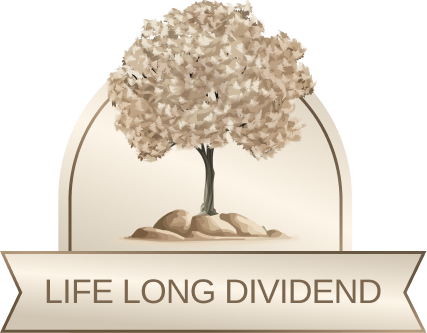In game theory, a “first-mover advantage” gives the opening player the power to set the rules of engagement. President Donald Trump built much of his political brand — and his Art of the Deal persona — on this idea: act big, set the tone, make others play defense. The strategy is simple: push hard up front, frame the deal, and only backtrack if necessary. It’s a tactic that can yield results in business, where individual stakes are limited and profit-and-loss signals keep players accountable.
But politics and governance aren’t business transactions. They’re repeated, dynamic games with millions of stakeholders, unclear incentives, and no bottom-line feedback. In this setting, the first-mover tactic, combined with erratic unpredictability, doesn’t create leverage — it creates dysfunction.
As Trump himself recently said on the White House lawn:
“I may do it… I may not do it. I mean, nobody knows what I’m going to do.”
That kind of uncertainty may work in a poker game — but it’s catastrophic for the economy. It undermines trust, destabilizes markets, and delays investment. And we’ve seen the consequences of this “nobody knows” governing style play out across nearly every major policy initiative — from trade and taxes to tariffs and pandemics.
Strategic Blunders in Economic Policy
Take trade policy. The United States–Mexico–Canada Agreement (USMCA) didn’t improve on NAFTA — it layered on more restrictions, mandates, and regulatory hurdles, making trade less free. It imposed stricter rules of origin, weakened investor protections, and made regional auto manufacturing more expensive. Rather than liberalizing trade, it entrenched protectionism under a new name.
Meanwhile, Trump’s tariffs are one of the largest tax increases on Americans. The Tax Foundation estimated that US tariffs imposed from 2018–2020 raised tax revenues by over $80 billion annually and increased consumer costs by an average of $1,277 per household. Retaliatory tariffs from China, the EU, and others directly harmed US exporters, especially in agriculture and manufacturing.
Even the widely publicized “Phase One” trade deal with China fell short. China failed to meet its purchase commitments, and the structural reforms promised — on intellectual property theft and forced technology transfers — never materialized. Strategic ambiguity resulted in economic underperformance.
Uncertainty Is a Tax on Growth
In economics, uncertainty acts like a tax on business decisions. Research shows that policy uncertainty reduces private investment, hiring, and innovation. The Hoover Institution noted that by 2019, Trump’s trade war and erratic regulatory threats were already slowing business investment before COVID hit.
Tax reform followed the same chaotic path. The 2017 Tax Cuts and Jobs Act (TCJA) made some positive moves — cutting the corporate tax rate from 35 percent to 21 percent, doubling the standard deduction, and improving full expensing. But it was undermined by temporary provisions and a lack of spending restraint. The Manhattan Institute found that despite strong pre-COVID growth, the Trump administration added $4.7 trillion to the national debt, including $3.9 trillion in new borrowing from legislation signed into law.
Why? As I found while working at the White House then, sending fiscal progressives like Steven Mnuchin to negotiate massive spending bills was a mistake. At the White House Office of Management and Budget, we saw how Mnuchin consistently prioritized deal-making over fiscal discipline — resulting in bloated omnibus bills and exploding deficits.
Pandemic Panic and Government Overreach
COVID-19 response amplified these failures. What began as “15 days to slow the spread” became 15 months of federal overreach, lockdowns, and more than $5 trillion in COVID-related spending. Much of it — like enhanced unemployment benefits and state bailouts — was extended long after the emergency faded.
This was not a market correction. It was a government overreaction to previous government failures. The Congressional Budget Office reported that federal spending reached 31 percent of GDP in 2020 — exceeding even World War II levels as a share of the economy. That’s not “stimulus” — it’s control.
The Wrong Game, the Wrong Incentives
In business, unpredictability might create bargaining power. In government, it creates instability. That’s because public policy affects long-term decisions across millions of households and firms. Public choice theory explains how politicians often respond to the wrong incentives — seeking short-term wins instead of long-term outcomes.
We saw it with proposals to block Nippon Steel’s acquisition of U.S. Steel. It’s a private deal, but political posturing — under both Trump and Biden — has turned it into a nationalist spectacle. It’s great that Trump recently approved it, but not after making it politically-charged, more restrictive, and an agreement that presidents shouldn’t get involved in. Likewise, new tariffs on $18 billion in Chinese imports will raise prices, reduce output, not solve perceived trade problems, and be a drag on other pro-growth efforts by Trump.
The outcome? Higher costs. More uncertainty. Less investment. Slower growth.
The Way Forward: Economic Freedom Over Erratic Power
There’s still time to get it right. The presidency is a powerful platform — but it should be used to unleash markets, not micromanage them. That starts with credible first moves that restore fiscal sanity, reduce tax burdens, lift regulatory burdens, and build trust through policy stability.
We should learn from bold reformers like Argentina’s Javier Milei, who are shrinking government and restoring trust in free markets. In the US, we have the tools — we just lack the direction and leadership to a brighter future.
What America needs isn’t another flawed deal. It needs a direction rooted in liberty, stability, and prosperity. As I often say, let people prosper. That’s the real art of leadership.

